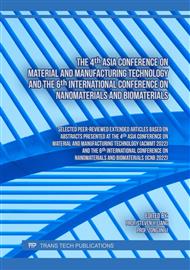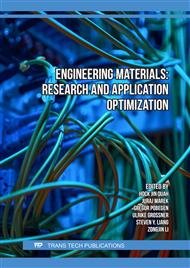p.77
p.83
p.89
p.95
p.105
p.111
p.117
p.131
p.139
Utilization of Plastic Waste and Waste Rubber Tyres to Modify Bitumen Binder in Road Construction
Abstract:
In line with the recent environmental concerns due to waste, researchers focus has been shifted to finding ways of recycling the waste in a most sustainable way. Accumulation of plastic waste, and rubber tyres in the environment is a concern and a threat to the environment. The current waste management has raised public awareness to look for new technologies for handling waste and an alternative to the current disposal technique. Some of the challenges encountered with the current waste management such as recycling, includes contamination of recycling streams, inability to meet recycling demand and the quality of the recycled plastics. One of the disadvantages of recycling is that it produces wastewater and air pollutants. Since recycling degrades the plastic integrity, most recyclable plastic waste is only suitable after one round of recycling, which ultimately leaves most recyclable plastic in the landfills, environment, and oceans. In addition to landfilling (waste management) and waste disposal, waste tires are also a worldwide problem. The current waste management method for waste tires is through incineration, whereby waste tires disposed and piled up in landfills, are treated through incineration. However, this process was found to be releasing enormous emissions, such as hydrocarbons and halogen-chlorinated compounds (chlorinated methanes, dioxins, and polychlorinated biphenyl (PCBs)). This also produces the pyrolytic oils that contains heavy metals and toxic chemicals, which have a potential of causing severe health effects. Moreover, exhausts from incineration of waste tires are far more mutagenic compared to coal-fires plants emissions . The study investigated the potential of modifying the bitumen binder with plastic (Polyethylene Terephthalate) and tyre wastes. In bitumen-rubber tyre modified binder, increasing the rubber tyre percentage above 5% in the binder, resulted in low ductility, due to the elasticity property of rubber, for both 5.5% and 6% bitumen. For the Bitumen-plastic modified binder, the softening point and ductility had a direct proportionality relationship. As the plastic percentage in the total weight of the binder increased, so did the ductility and the softening point, due to the plasticity property of the plastic that enabled the mixture to be homogenous.
Info:
Periodical:
Pages:
131-138
Citation:
Online since:
May 2023
Authors:
Keywords:
Price:
Сopyright:
© 2023 Trans Tech Publications Ltd. All Rights Reserved
Share:
Citation:



